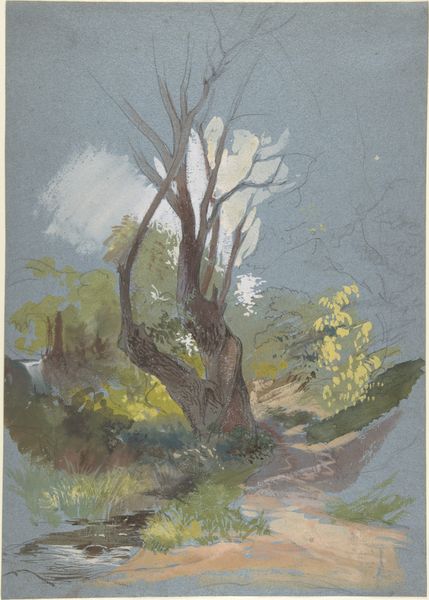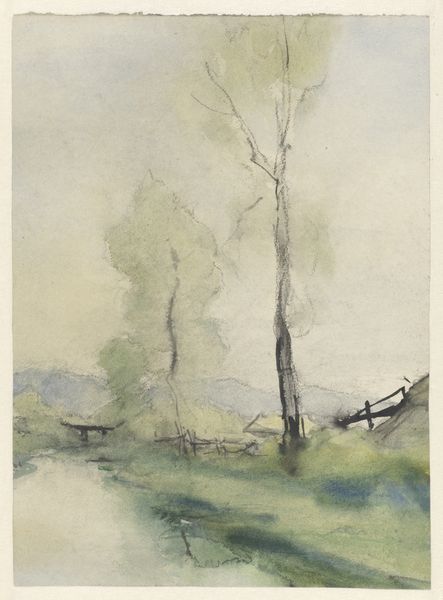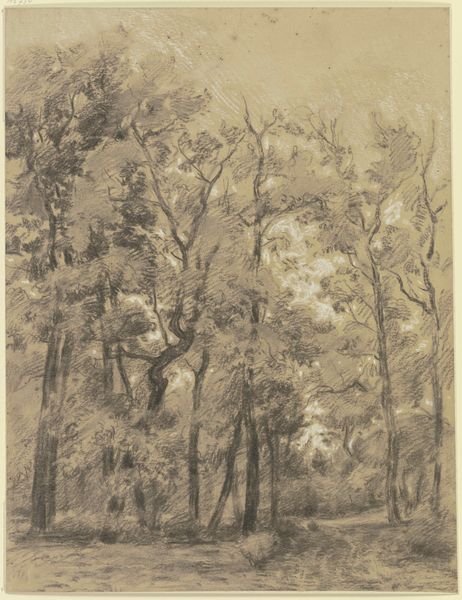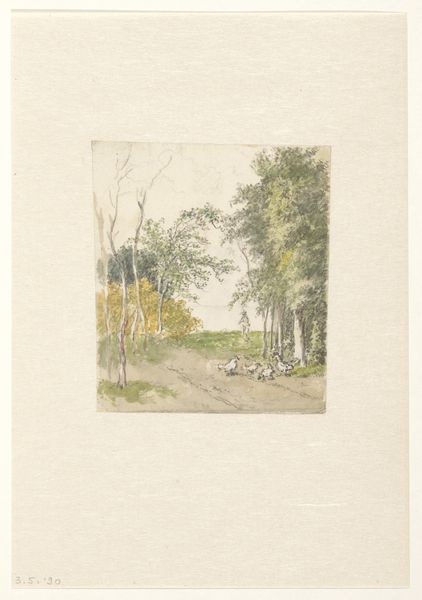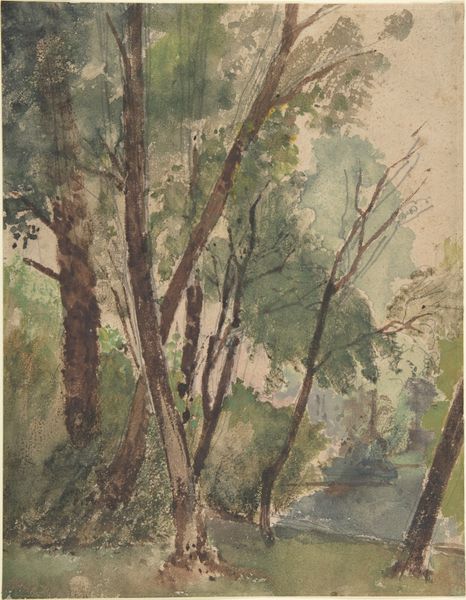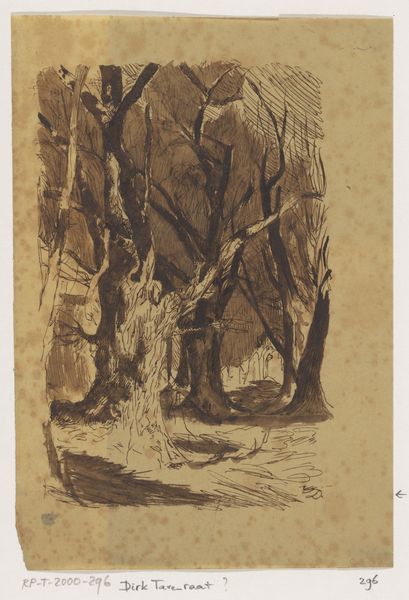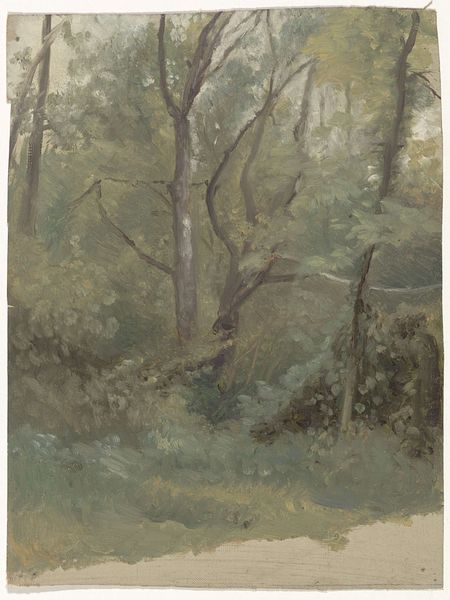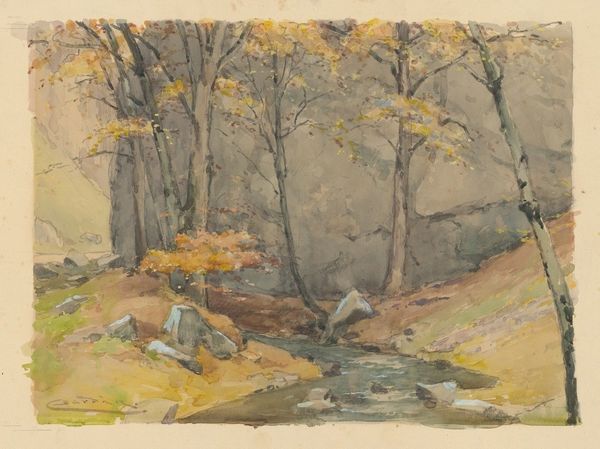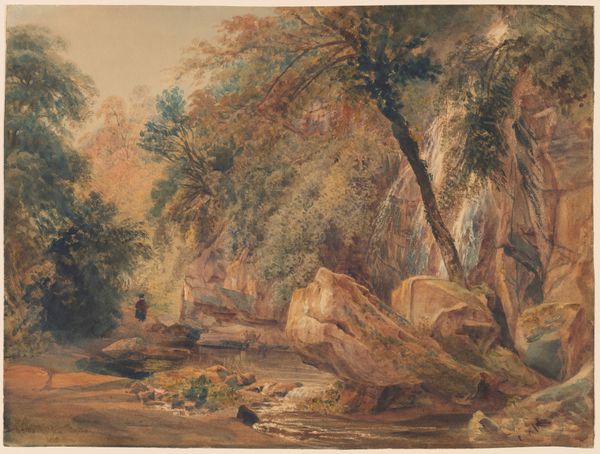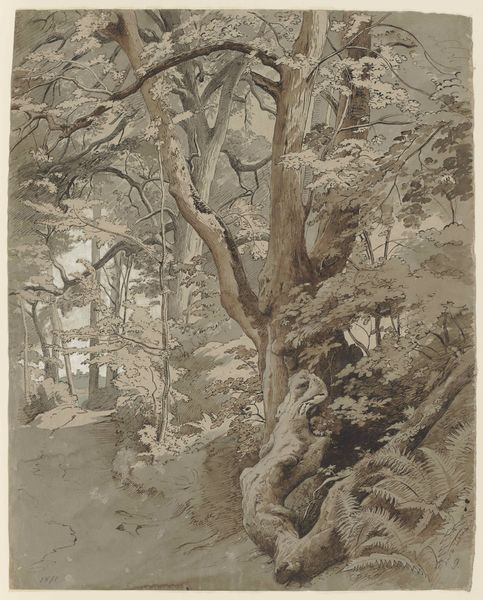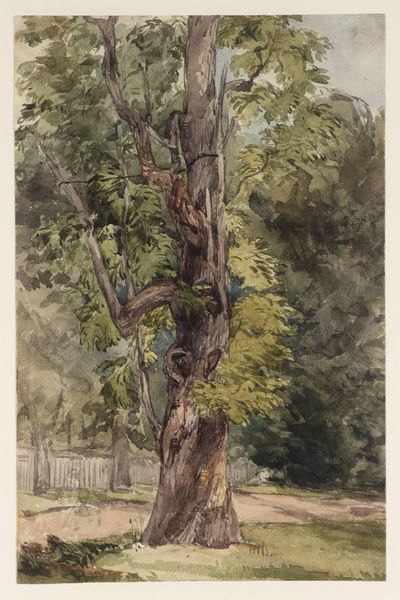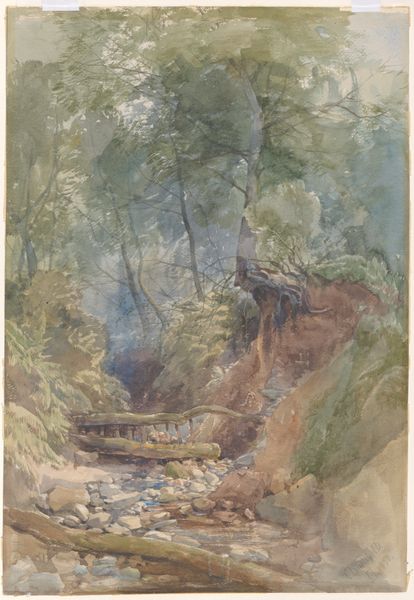
Dimensions: 13 1/16 x 9 5/8 in. (33.2 x 24.4 cm)
Copyright: Public Domain
Henri-Joseph Harpignies made this watercolor landscape, probably in the later 19th century, in France. Watercolor allows for a unique kind of spontaneity. You can see this in the washes of pigment and the quick, suggestive lines that define the trees and path. The transparency of the watercolor gives the whole scene a luminous, airy quality, as if we are right there in the French countryside. But let's think about the social context too. Harpignies was part of a generation of artists who turned away from grand historical themes to focus on the everyday. Watercolor was ideal for this, as it allowed for working outdoors, en plein air, capturing the fleeting effects of light and atmosphere. This shift towards direct observation also speaks to a broader democratization of art, where the lives of ordinary people and places became worthy subjects, reflecting the changing social and economic landscape of the time. Watercolor, traditionally seen as a preparatory medium, gained recognition as a final form of art.
Comments
No comments
Be the first to comment and join the conversation on the ultimate creative platform.
